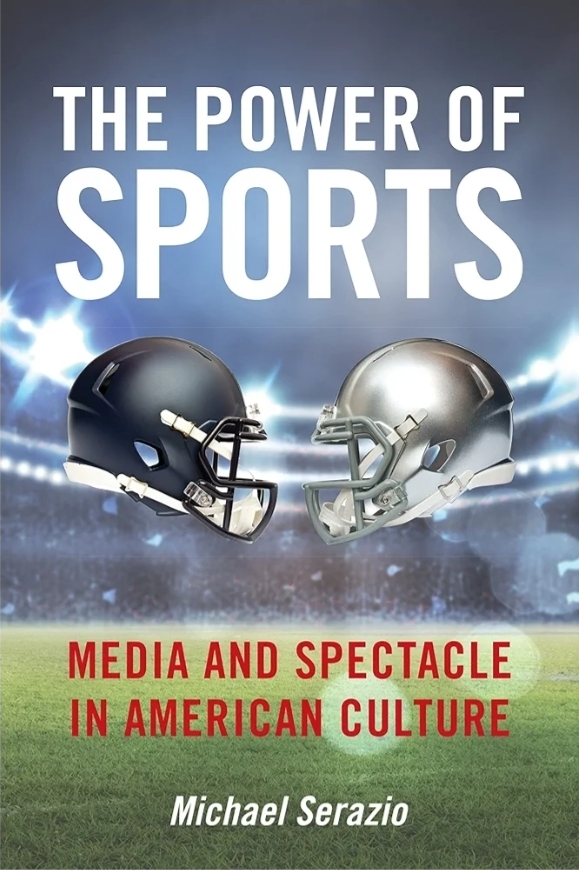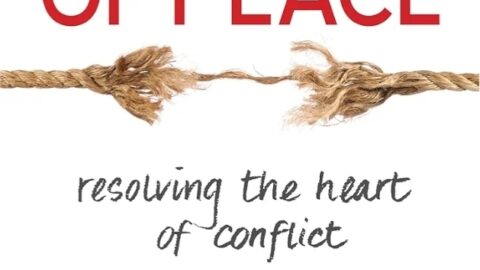When I was younger, I was a sports fanatic in every sense of the word. In high school, my life revolved around the seasons—basketball, baseball, football. I memorized player stats, followed scores religiously, and could recite records the way others quote Scripture. Sports weren’t just entertainment; they were identity, rhythm, and ritual.
But as I matured and began to study the deeper intersections of life—spirituality, morality, psychology, and politics—I realized something crucial: attention is finite. Every hour of focus poured into a box score was an hour not invested in God, family, work, or country. I began to see how my obsession—though culturally praised—had been quietly redirecting my devotion away from higher purposes.
To protect what truly mattered, I had to make a choice. I laid down sports and video games—not because they were evil, but because they had become masters of my time and emotion. That time and energy were reclaimed to study, to think, and to understand the world more clearly—so I could defend what I loved: God, family, and freedom.
Looking back, that choice marked a turning point. It revealed how the culture of spectacle—especially through sports—can capture the human spirit, pacifying whole societies while power consolidates elsewhere. Once I saw that dynamic, I could never unsee it.
That personal awakening led me to see sports through a new lens—not as harmless entertainment, but as one of the most effective psychological tools of mass management ever created. Sports culture, when fused with media and politics, becomes a pressure valve for the population: it channels aggression, loyalty, and tribal passion into controlled arenas where nothing truly changes. The crowd feels victorious or defeated, not in the real world of policy or morality, but in an artificial battlefield that keeps them emotionally invested but politically asleep.
The cheering, the rivalries, the endless news cycles about trades and trophies—these all mimic the structure of civic engagement while quietly replacing it. Stadiums become cathedrals, athletes become priests, and corporate networks become the high councils of modern religion. Meanwhile, the true game—the one about sovereignty, finance, morality, and truth—is played elsewhere, by those who understand that distraction is the most elegant form of control.
Sports aren’t the problem by themselves. The danger lies in how they’ve been engineered—how passion has been monetized, redirected, and weaponized to keep the public’s attention away from deeper questions: Who owns the teams? Who owns the networks? Who benefits when the masses cheer but never act?
The New Coliseum: How Bread and Circuses Became Broadcast and Screens
From arena to algorithm.
Rome had stone; we have streams. What used to be a physical coliseum is now a 24/7 media stack—broadcast rights, highlight clips, betting apps, fantasy leagues, push alerts. The spectacle no longer requires you to show up; it shows up for you, calibrated by algorithms that learn your loyalties and keep you emotionally “on call.” Attention isn’t invited—it’s harvested.
Rituals that replace responsibility.
Pregame anthems, halftime flyovers, military tributes, and jersey “causes” mimic civic participation. You stand, clap, hashtag—then sit back down. The feeling of unity is real, but it’s borrowed unity: it costs nothing and changes nothing. Civic courage gets swapped for performative rituals that scratch the itch of belonging without demanding sacrifice.
Merchants in the temple.
Publicly financed stadiums, luxury boxes, naming rights, data-mined ticketing, cashless concessions—spectator culture is a finance machine wrapped in community language. Cities take on debt; owners capture upside; fans foot the bill twice (taxes and tickets). The “home team” brand tells you it’s ours; the cap table says otherwise.
Gaming the fans—literally.
Sports betting, micro-wagers, and fantasy integrations turn spectators into revenue streams. Every possession becomes a contract; every emotion, a monetizable event. The house always wins, but the public thinks it’s playing the game. In reality, the game is playing the public.
Manufactured tribes, managed conflict.
Rivalries channel real human hunger for meaning into safe, cyclical conflict. You get identity, drama, catharsis—on schedule. Monday you hate their colors; Tuesday you share the same city and vote on autopilot. Passion is spent in the stadium, not in the school board, city hall, or the hard work of reform.
Surveillance as convenience.
Biometric entry, location beacons, dynamic pricing, and behavior scoring are sold as “frictionless fan experience.” They also normalize a culture where movement, mood, and money are continuously tracked. The coliseum is now a lab, and the citizen is now a dataset.
The swap.
In the end, bread-and-circuses didn’t disappear; they upgraded. The spectacle offers the feel of purpose while siphoning the time you need for purpose. And purpose—faith, family, craft, community, country—cannot be benchwarmed. It lives or dies on the time we give it.
Who Owns the Game? Media, Leagues, and the State
If the coliseum has been rebuilt, someone owns the blueprints. Modern sports are no longer civic pastimes — they’re vertically integrated empires spanning broadcast rights, advertising, gambling, data, and politics. To understand their influence, follow the ownership trail:
1. The Leagues
The NFL, NBA, MLB, and FIFA operate as cartels — private associations exempt from many antitrust rules. Teams appear as rivals on the field but collaborate financially off it, ensuring collective bargaining agreements, revenue-sharing, and market protections that mirror a syndicate, not a free market. Expansion teams are auctioned for billions because access to the cartel’s global broadcast machine is worth more than the sport itself.
2. The Media Conglomerates
Disney (ESPN, ABC), Comcast (NBC), Paramount (CBS), and Fox control nearly all major broadcast and streaming rights. Each pays leagues billions, not just for content, but for cultural monopoly — the ability to command attention and shape national mood. They choreograph narratives: who’s the hero, who’s the villain, which causes trend, which controversies distract. “Coverage” is storytelling; “sports news” is national conditioning.
3. The Sponsors and Data Miners
Every jersey patch, halftime ad, and fantasy league is a data portal. Corporations buy access not to fans but to fan behavior — what they buy, where they travel, what triggers them emotionally. Gambling and micro-betting have completed the loop: sports are no longer just broadcast—they’re behavioral science, engineered engagement ecosystems.
4. The State Partnership
Government isn’t outside this system—it’s a stakeholder. Stadium subsidies, military sponsorships, “salute to service” flyovers, and defense contracts blur the line between patriotism and PR. The Pentagon once paid millions for “honor the troops” segments—manufactured unity at taxpayer expense. Sports, in this sense, serve as soft-power camouflage for hard-power policy.
5. The Globalization Layer
International leagues, ownership from oil-rich states, and cross-investment by tech billionaires (Saudi Arabia’s LIV Golf, China’s NBA partnerships, Qatar’s World Cup) demonstrate that sports diplomacy is no longer symbolic—it’s financial colonization. The field has become a trading floor.
When people say “we just love the game,” they’re often unknowingly describing a multi-layered apparatus of control. The emotional loyalty of billions keeps cash and consent flowing upward. The fans think they own the spirit of sport; in truth, the game owns them — their attention, their identity, and increasingly, their data.
Introduction into the book
Sports are not merely games. They are rituals, stories, and spectacles that shape culture, politics, and identity. Michael Serazio’s The Power of Sports: Media and Spectacle in American Culture reveals how the playing field has become one of the strongest stages for propaganda, commerce, and distraction. Sports do not simply entertain—they condition minds, normalize power, and pacify populations.
Throughout history, rulers have known the value of entertainment in keeping their subjects distracted. Ancient Rome perfected this through the gladiator games, filling the Coliseum with spectacle while the empire rotted from within. Today’s stadiums, with fireworks, anthems, and larger-than-life athletes, play the same role. Still keeping us distracted. Little has changed. As Orwell observed in 1984, “Football, beer, and above all, gambling filled up the horizon of their minds. To keep them in control was not difficult.”
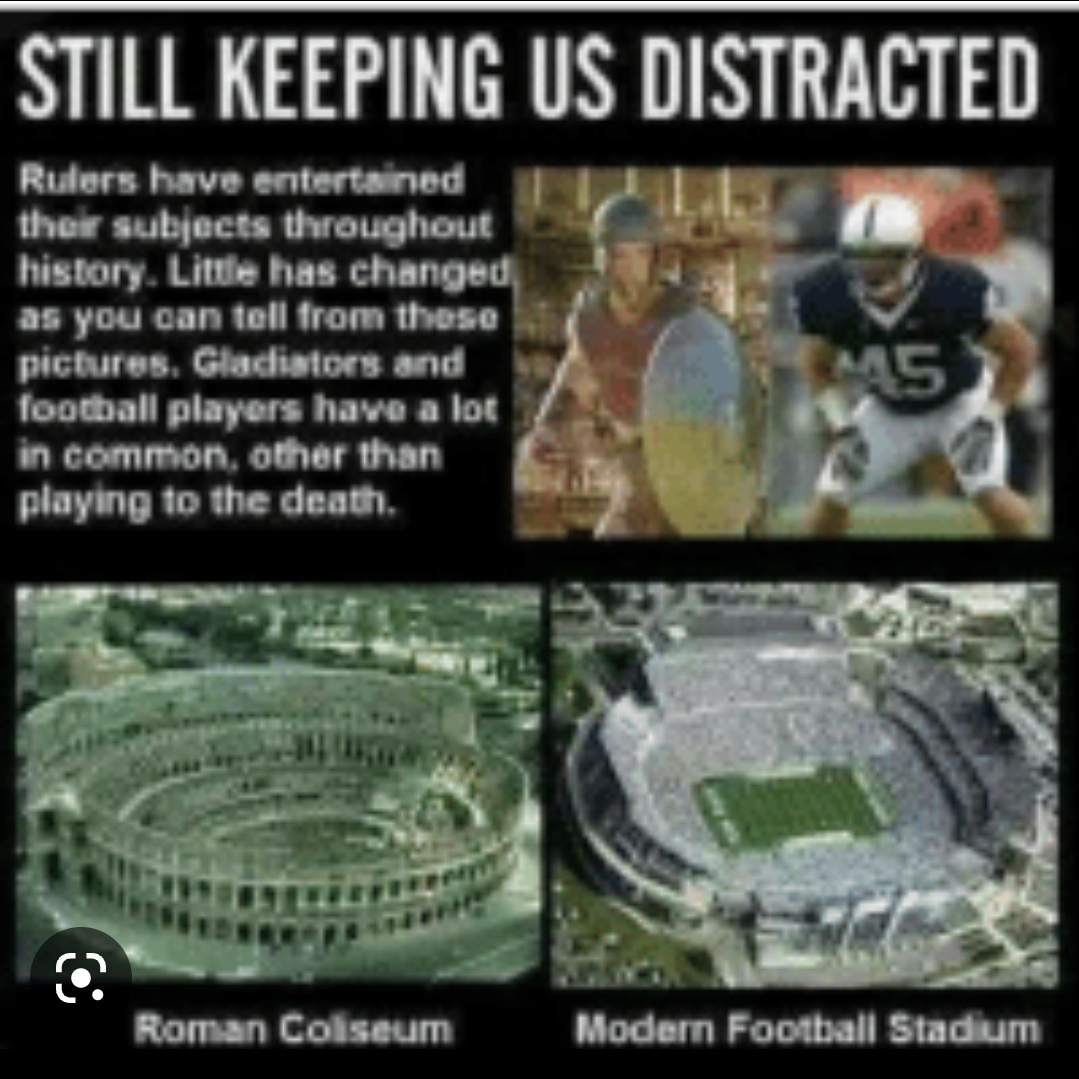
Ritual and the New Religion of Fandom
In an age when religion is declining as a unifying force in the West, sports have stepped into its role. Stadiums function as temples. Game days become liturgies. Fans wear jerseys like vestments, chant team hymns, and gather in communal worship of their heroes. Loyalty to a team is not simply casual entertainment—it becomes a source of meaning, a binding identity.
This ritualistic function of sports has always been politically useful. In Rome, the Coliseum distracted the masses from corruption and economic decline. Today, Super Bowl Sunday eclipses civic reflection. Bread and circuses still rule.
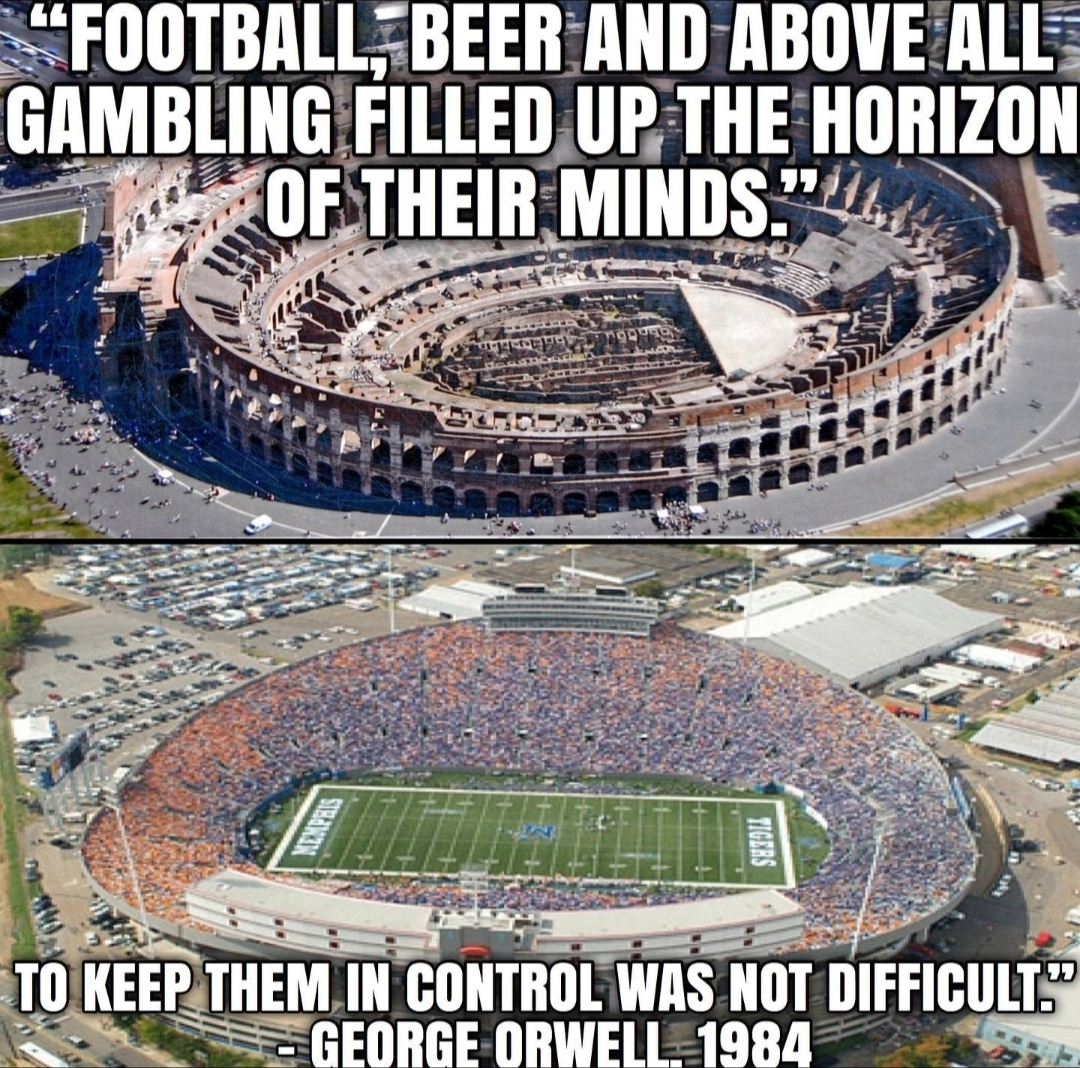
Media, Journalism, and Manufactured Reality
Sports journalism no longer exists to report truth but to amplify spectacle. Serazio shows how reporters now function less as watchdogs and more as hype men. When athletes bypass traditional media with direct-to-fan social media, journalists double down on narrative crafting—spinning stories of rivalries, redemption, and drama to keep eyes glued.
This curated reality trains the mind to confuse entertainment with truth. It is the same formula used in politics and propaganda: emphasize spectacle, minimize critical thought. Whether it’s a quarterback or a politician, image eclipses reality.
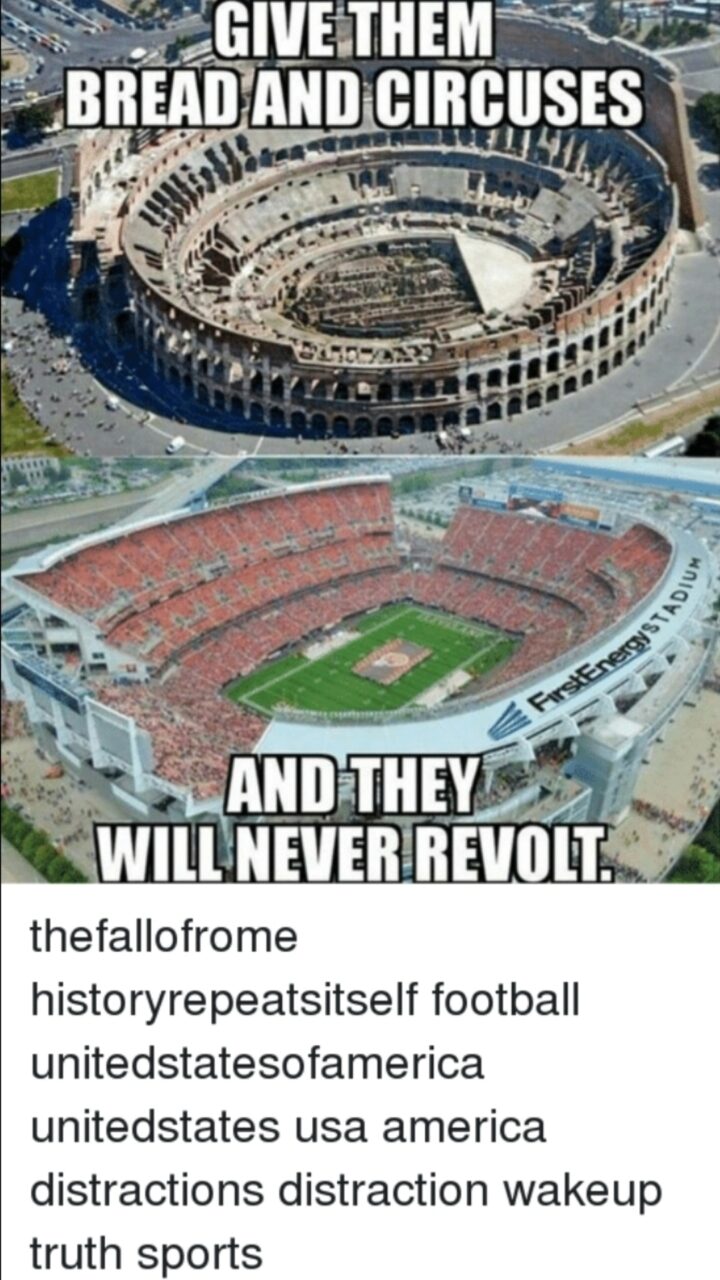
Commerce and the Fan as Consumer
In the modern era, fandom has fused with consumerism. Sports are no longer simply watched; they are bought. Jerseys, betting apps, fantasy leagues, merchandise, and streaming packages ensure that allegiance is expressed through purchase. To be a “true fan” is to spend.
This transformation mirrors what we have traced in our mark-of-the-beast analysis: participation becomes conditional on membership. Just as Costco demands a card to enter, sports demand merchandise and subscriptions to belong. The system conditions people to conflate identity with consumption.
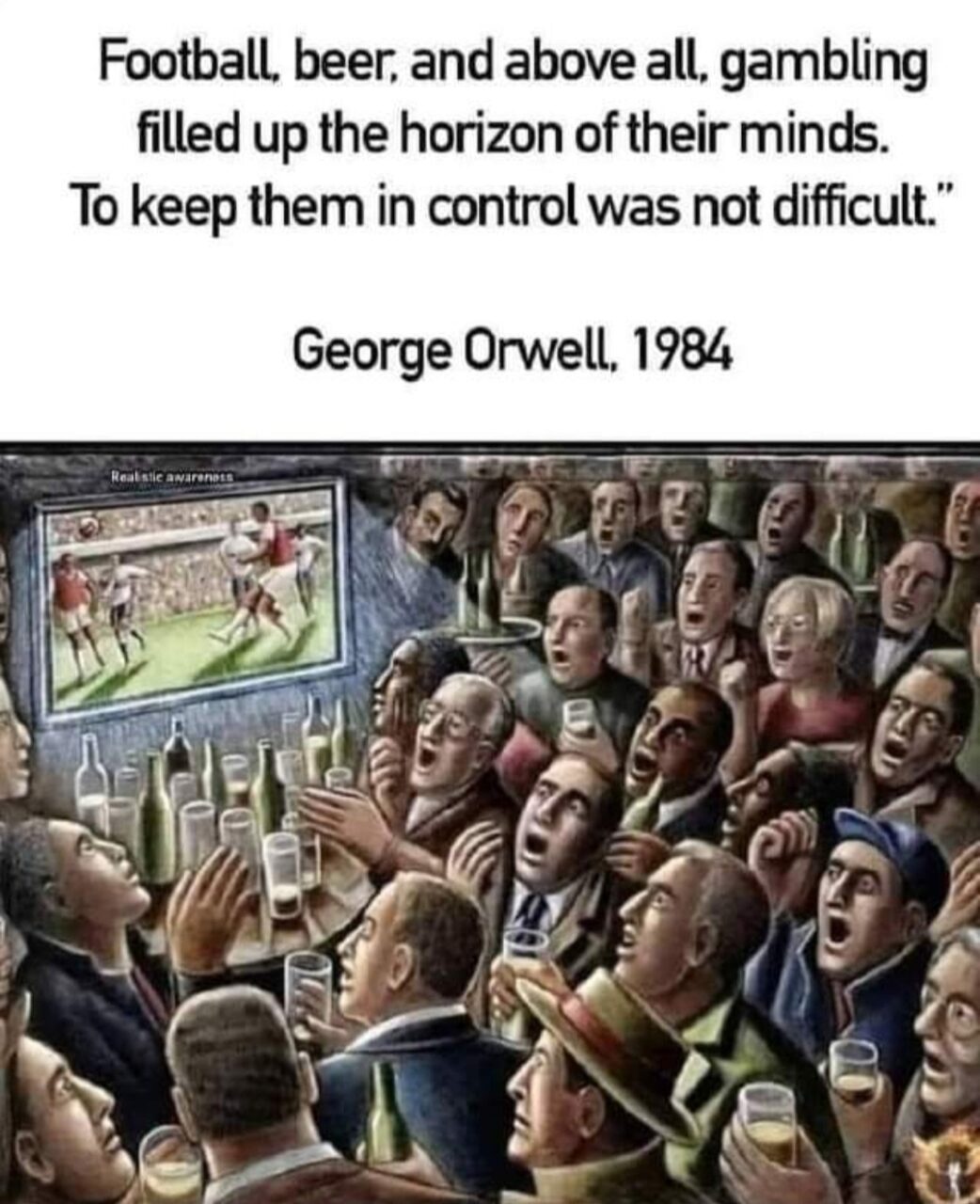
Masculinity, Gender, and Social Norms
Sports also enforce cultural scripts. Men are taught that toughness, aggression, and obedience to authority are marks of manhood. The locker room becomes a boot camp of hierarchy. Women in sports—whether athletes or journalists—are judged primarily by appearance, not skill. These dynamics reinforce societal hierarchies, making the stadium a training ground for cultural norms as much as competition.
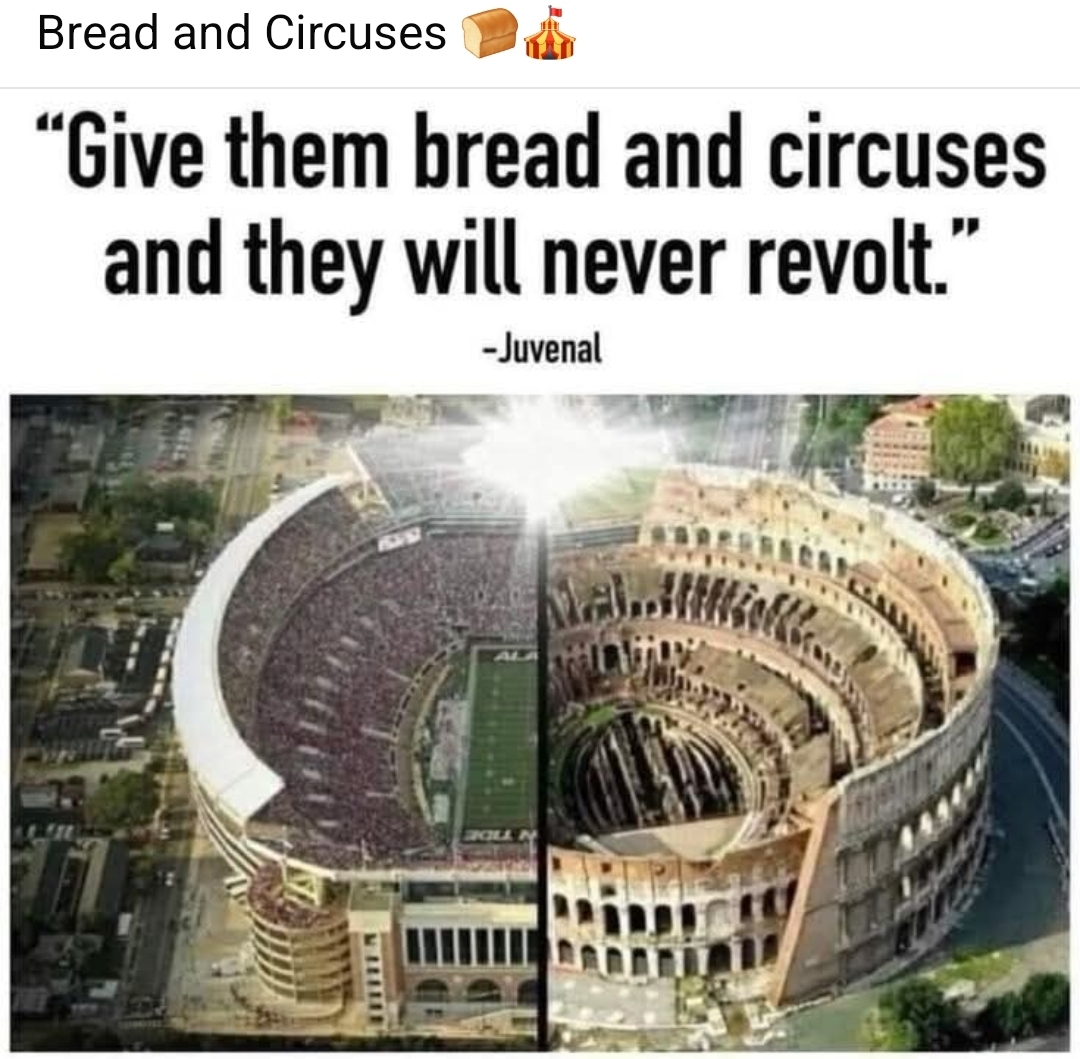
Politics and Patriotism in the Arena
Perhaps the most insidious role of sports is how they intertwine with politics. Every game begins with rituals of nationalism: the anthem, military flyovers, flags the size of fields. These spectacles normalize patriotism-as-performance while silencing dissent. When Colin Kaepernick knelt, the backlash revealed the true function of these rituals: not unity, but conformity.
Sports become cover for militarism, corporate power, and state propaganda. Fans think they are escaping politics, but in reality they are participating in a theater of loyalty.
A Mirror of Society
Sports are not separate from culture—they are a mirror of it. Race, class, gender, politics, and economics all play out in the arena. From the exploitation of poor athletes to the corporate monopolies behind billion-dollar leagues, the system reflects the same injustices we see outside the stadium.
But the mirror is distorted. It flatters power, glamorizes consumption, and diverts attention. Fandom is not freedom—it is a script written by others, acted out by masses who believe they are simply cheering for a game.
Conclusion: Why This Matters
Serazio’s work reminds us that sports are not just entertainment. They are a system of distraction, consumption, and indoctrination. They saturate the conscious mind with endless news, highlights, and hype. They train the subconscious through rituals, chants, and repetition. And they mold the unconscious by embedding archetypes—heroism, patriotism, masculinity—so deeply that they feel natural and unquestionable.
The Roman Coliseum kept citizens entertained while their empire declined. Today’s stadiums play the same role, but with more sophisticated tools—television, algorithms, betting apps, and corporate branding. If we do not recognize the spectacle for what it is, we will continue to mistake manipulation for meaning.
The power of sports is not on the field. It is in the way it controls the crowd.

